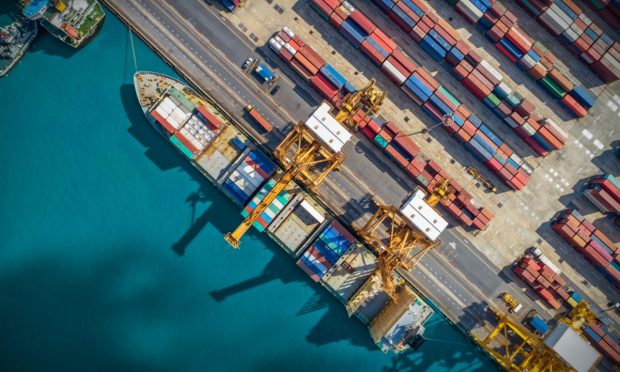Industries Try Allocations, Alternate Vendors and New Forms of Transportation to Work Around Supply Chain Problems

Supply chains remain plagued by shortages of labor, commodities and transportation. In response, suppliers and retailers are trying new ways to move goods on cargo liners, trains and competitors’ trucks.
In order for retailers to sell products, consumers must have products to buy. In the absence of products to buy, there are shortages and higher prices. These simple truths have forced retailers to undertake some complex solutions to challenges in their supply chains, which are plagued by shortages of labor, commodities and transportation, as well as other problems.
These are in many cases related to the pandemic, with factories shutting down, ports experiencing delays and many parts of the supply chain facing a shortage of workers.
In the grocery industry, shortages are not as visible as they were at the beginning of the pandemic, but neither has supply recovered to where it was before the pandemic, CNN reported on Sunday (Oct. 10). Many of the country’s biggest food makers are telling grocers they will have limited quantities of their products. Some also report shortages of glass jars and packaging containers.
Adapting to Conditions
As a result, some suppliers are shifting their limited production capacity to top-selling items; imposing allocations, or purchase caps, for certain products on grocery stores and distributors; telling grocers to cancel promotions of certain items over the holiday, and issuing general warnings of limited availability.
Grocers, too, are adapting. One is working to bring in inventory earlier, another is trying to tap secondary suppliers when its primary vendors can’t fulfill orders, and still others are reinstating purchase limits for customers on some items.
Supply chain problems also threaten supplies of goods sold by some of the nation’s biggest retailers, including holiday decorations, toys, appliances and furniture, The Wall Street Journal reported on Sunday (Oct. 10). For goods that move by sea, it is taking roughly 80 days to transport them across the Pacific, or twice as long as before the pandemic.
Chartering Private Cargo Ships
Some of these retailers, including The Home Depot, Costco and Walmart, are chartering private cargo ships to get around the ports at which there are delays. The strategy is costly — in some cases nearly twice as expensive as moving cargo on the vessels that are more typically used — but this provides the retailers with a way to reroute cargo to less congested docks.
Because of the cost, The Home Depot is using charters only for the most in-demand products, while Costco is giving priority to seasonal merchandise.
The country’s rail network, too, is facing snarls and congestion, The Wall Street Journal reported on Saturday (Oct. 9). The problems are being caused by unprecedented activity at ports, a shortage of truck drivers and record demand at some rail hubs.
Almost as much freight is moved each year by trains as by trucks. One solution that may be seen in the U.S. in the future is autonomous trains, which could increase the capacity of existing rails as much as 50%.
Avoiding Last Year’s Snafus
In another part of the supply chain, Walmart’s last-mile delivery network, called Walmart GoLocal, has signed its first retail client, The Home Depot, as PYMNTS reported on Friday (Oct. 8).
More details: Walmart GoLocal Signs Home Depot as First Retail Client
The deal shows how serious big-name retailers are about avoiding last year’s last-mile snafus, which caused more than one million holiday orders to miss Christmas.
Amazon, too, provides logistics capabilities to competitors through its Multi-Channel Fulfillment unit, offering packing and delivery services to eCommerce merchants on Shopify, Etsy and other marketplaces.
Another industry dealing with these problems is apparel, where brands are having to navigate increased transit times, factory shutdowns and other rising costs across the supply chain. For one thing, cotton prices have hit a 10-year high, PYMNTS reported on Monday (Oct. 11).
See also: Rising Cotton Prices Intensify Headwinds for Apparel Brands
Beyond that, Nike reported last month that it had lost 10 weeks of production since mid-July because of factory closures in Vietnam and Indonesia. That has led to warnings from executives that demand will likely outpace supply for the next several quarters.
